Norris Porcelain Basin - Features east of the central boardwalk to Pinwheel Geyser (II)
At Sunday Geyser a branch of the boardwalk leads eastwards to the Porcelain Spings. It meets the ramp of the old trail after approximately one hundred yards. Features west of the ramp have been presented on the previous pages. So in the follwing features east of the ramp will be shown.
On the east side of the old ramp, at some distance to the boardwalk, the Primrose Springs form a cluster of inconspicuous hot springs. Primrose Spring (south), the largest among the cluster, is empty most oft the time.
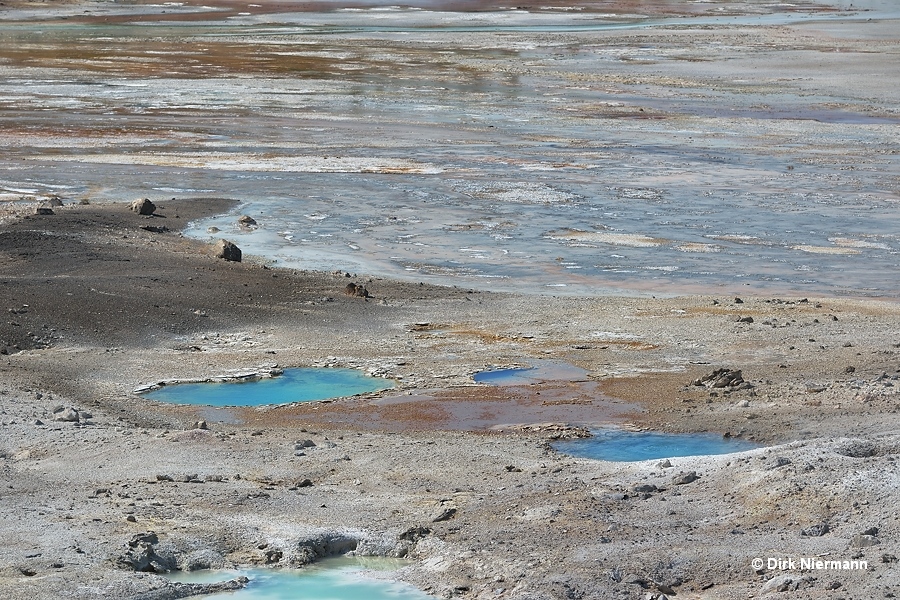
Primrose Spring itself is a rarely playing geyser, as to be seen in the next picture. The play lasted 17 minutes, but I did not determine the interval.
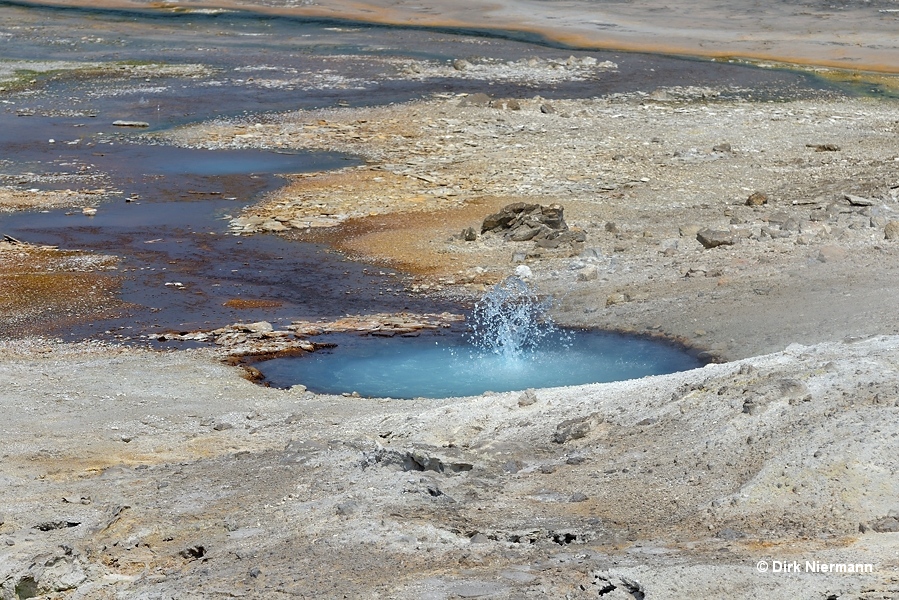
East of the Primrose Springs and somewhat closer to the boardwalk a further typically clouded blue pool can be seen. It carries a funny but fitting name: Swiss Cheese Pool.
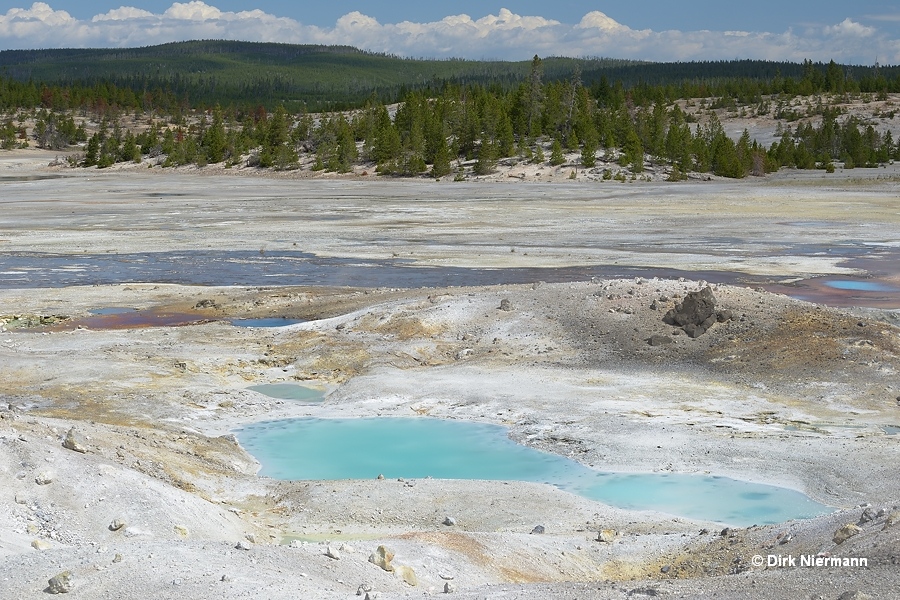
A nameless, but attractive spring is embedded in the knolls a few feet northeast of Swiss Cheese Pool. Sometimes the spring shows weak eruptions.
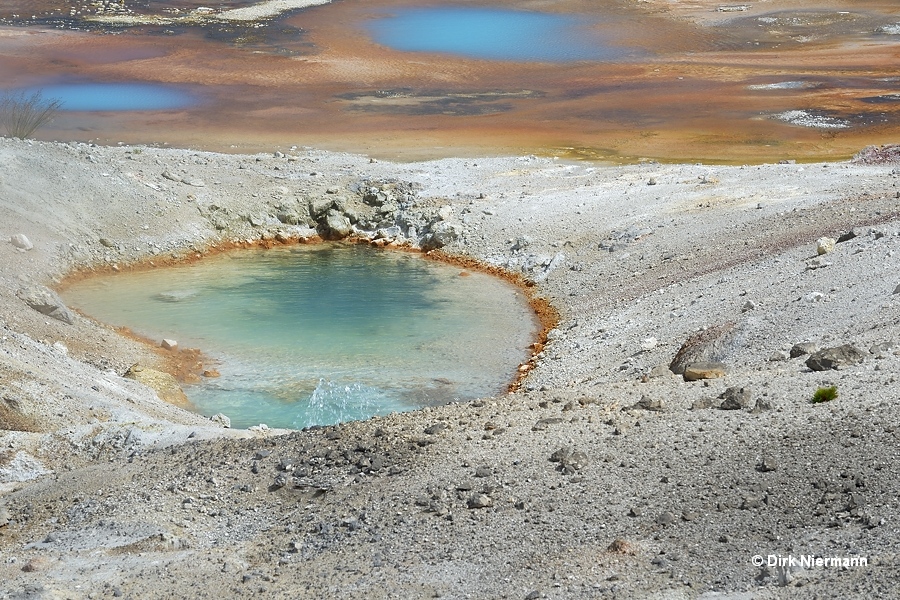
The adjacent Porcelain Springs occupy a flat area called Porcelain Terrace, bordered to the west, the south and the east by gently sloping hills. Structures within Porcelain Springs are changing very quickly because emitted hot water precipitates a lot of minerals in a short time. On the other hand the minerals together with thermophilic bacteria often generate fanciful deposites in gorgeous colors. Dying trees reveal the progress of hot ground on a comparison of stacked photos from 2013 (on top) and 2015 (beneath).
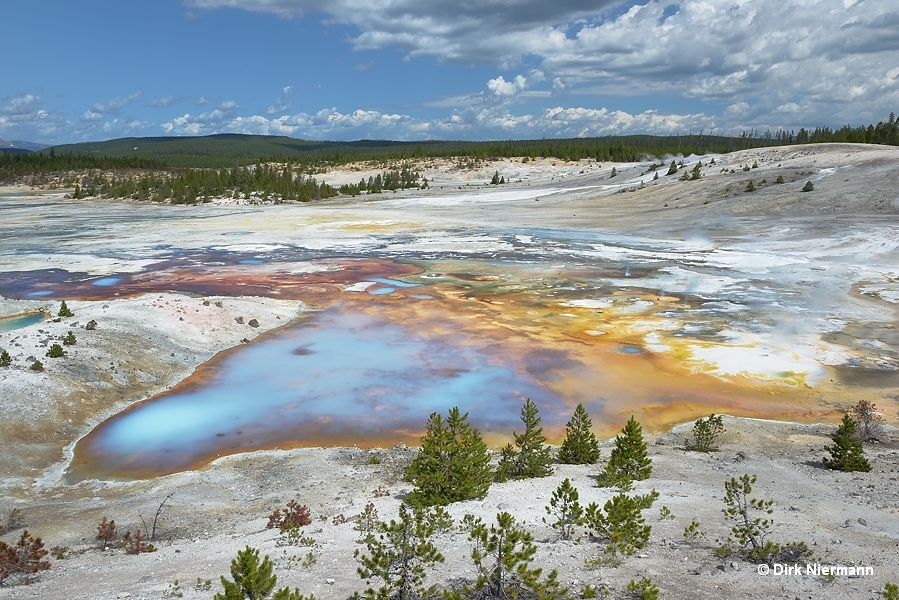
However, changes are not only becoming apparent in the quick growth of sinter, but also in terms of temperature and general activity. From the early 2000s up to 2011 the Porcelain Springs showed low temperatures and discharge rates, so the overall impression of the section was quite dull, as the next picture reveals. This changed from the end of 2011 onwards, when hot, bluish water flooded extended areas again and brought back the extensive growth of colorful bacterial mats.
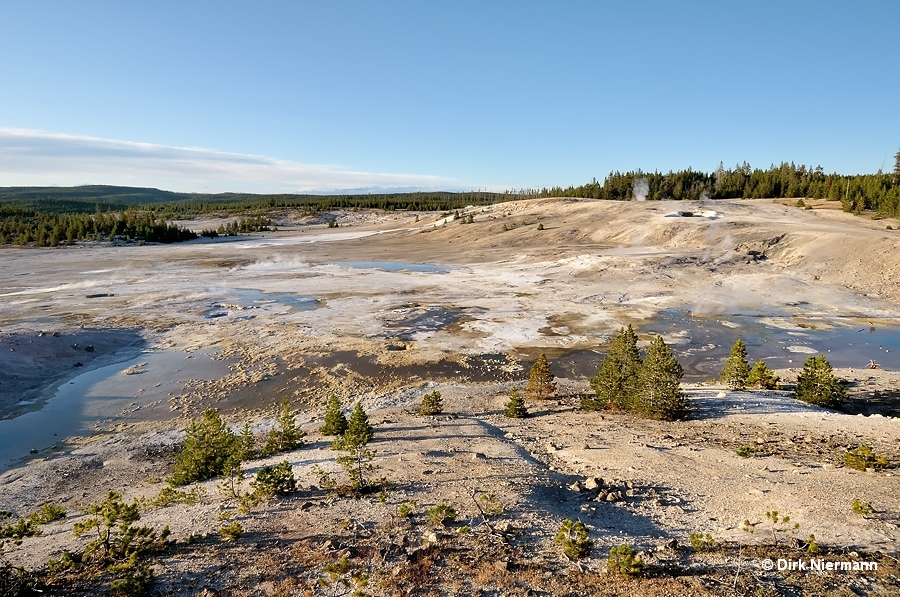
There is a reason why the Porcelain Springs and all the way to the Primrose Springs are differing so much in terms of colorfulness from the rest of Porcelain Basin. They are an enclave of alkaline conditions within an acidic surrounding.
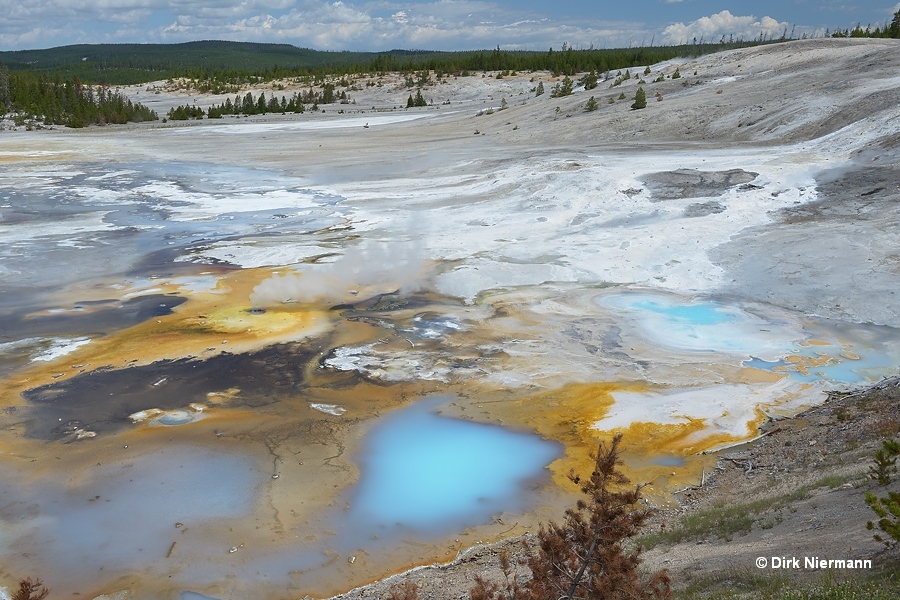
Two informally named geysers are located within the Porcelain Springs, Lambchop Geyser and Incline Geyser. Lambchop Geyser is sometimes acting as a forceful steam vent, sometimes as geyser.
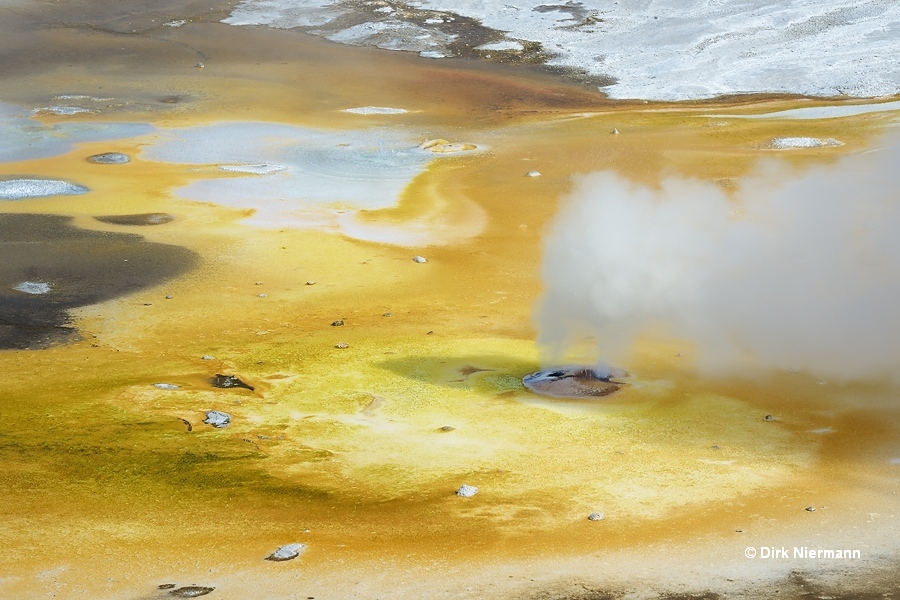
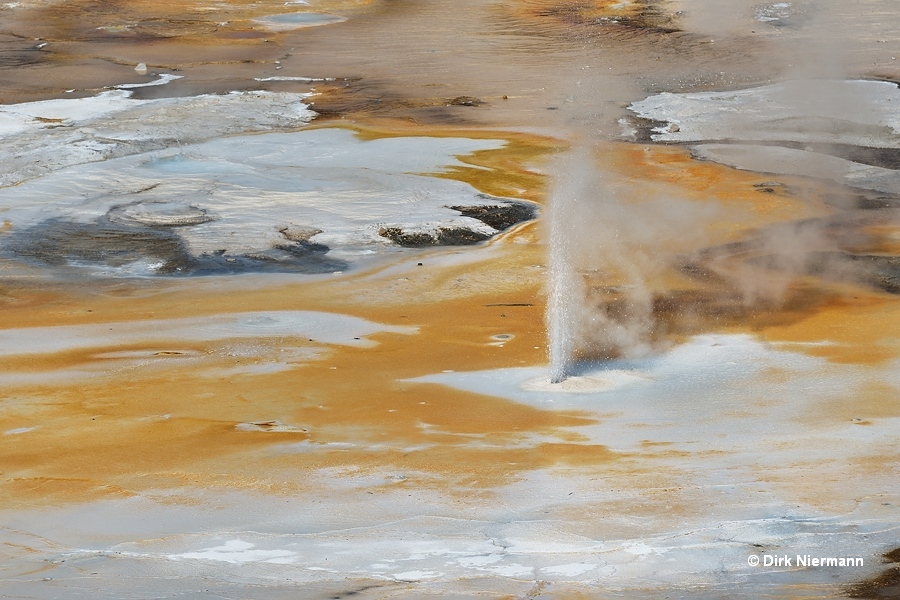
At the time of its development in the early 1990s, Incline Geyser underwent some of the largest eruptions ever seen in Porcelain Basin. But then it fell dormant and used to be only a jagged crater, partially filled with water. New activity started at the end of 2011, when the water level rose and the previously weak spouting activity increased at different spots. The freshly precipitated sinter together with the pale blue water make a grateful object for photographers.
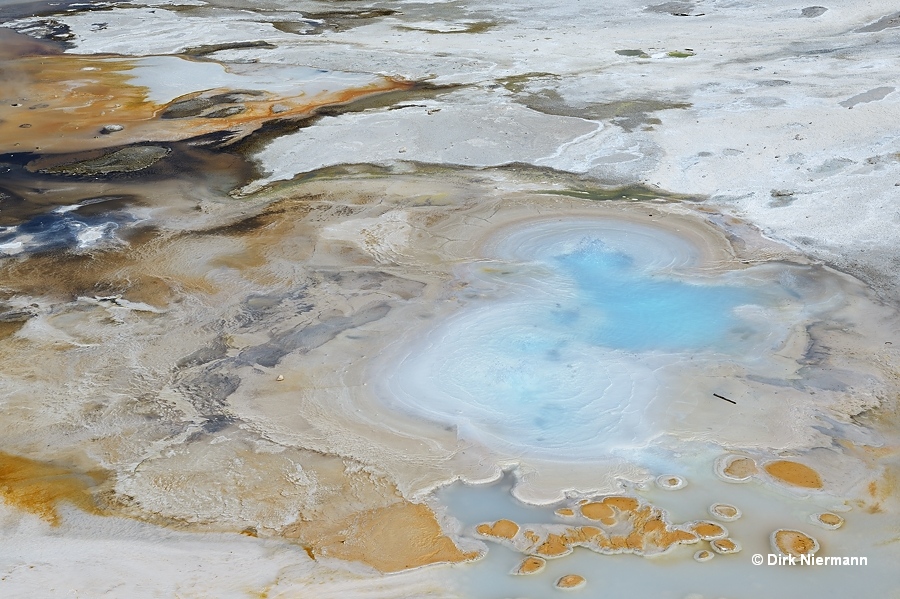
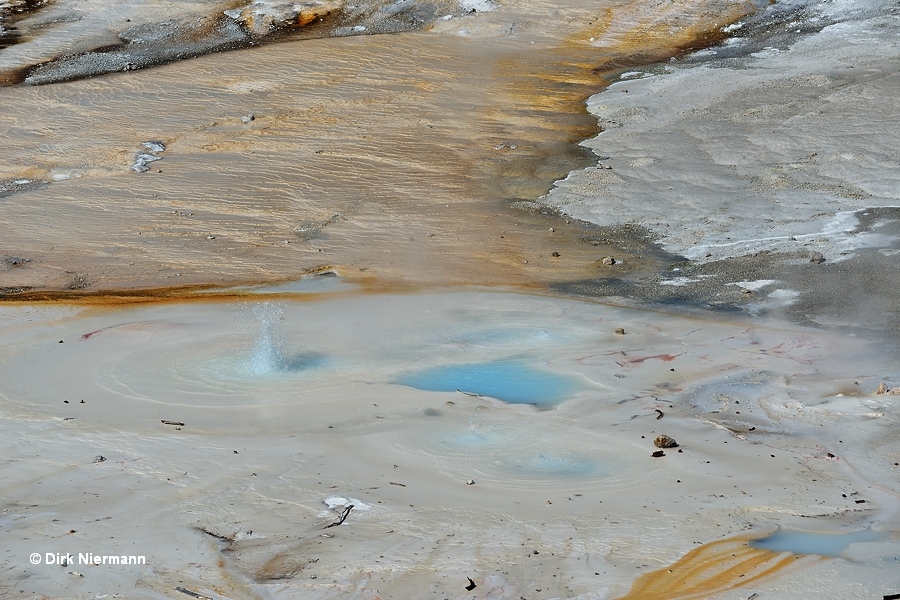
Next a cluster of perpetual spouters at the northern edge the Porcelain Springs is pictured. The large one in background is existing for many years, the smaller ones around it mostly come and go quickly.
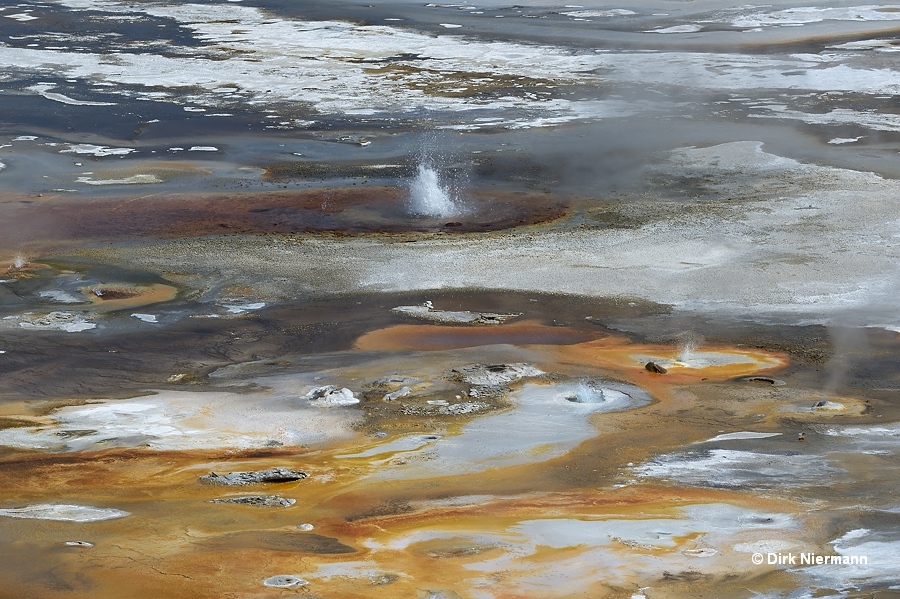
Four years later, a close-up of the rightmost spouter in the picture reveals the rapid formation of terraces, which already buried the perpetual spouter in front of the feature.
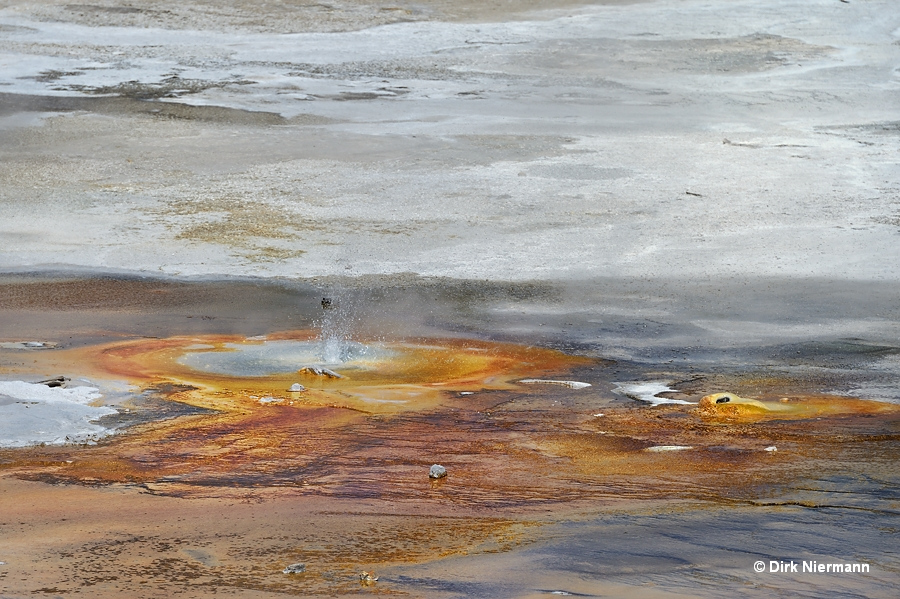
Across the boardwalk from the Porcelain Springs trees largely obscure the view in a southward direction. Some hot springs are located among or behind the trees, for example NPBNN022.
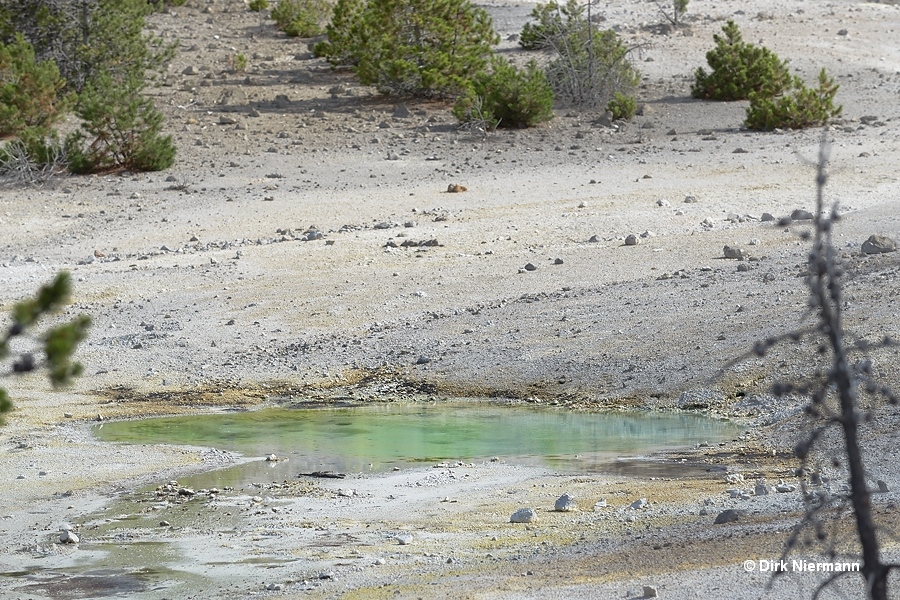
A branch of the boardwalk leads through this southern area back to Norris Museum. The first feature to the lefthand side is Congress Pool, an acidic geyser more noticeable because of its strongly changing water level than the height or frequency of eruptions. Its name refers to the 5th International Geological Congress held 1891 in Yellowstone. The most interesting secret of Congress Pool is not readily visible. Microbiologists detected a community of the hydrogen sulfide oxidizing archaeon Sulfolobus acidocaldarius in Congress Pool, which is parasitized by viruses nobody ever found before. Moreover, Congress Pool is one of a few acidic hot springs in Yellowstone where in the early 1970s Thomas D. Brock collected the samples which let him discover Sulfolobus itself.
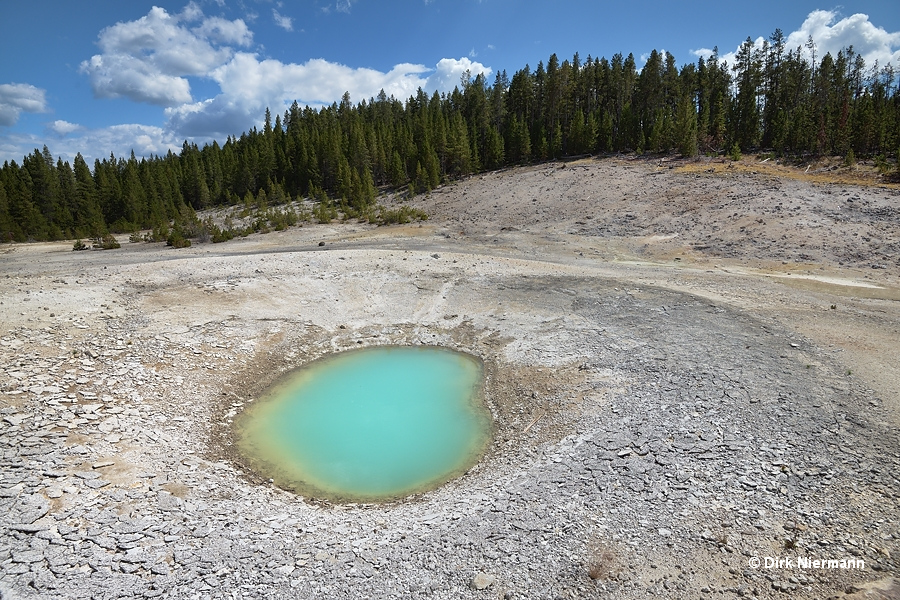
Both beyond Congress Pool and on its south side, even on the slope, further hot springs are to be found. Closest to the boardwalk, but still too far to be completely visible, the Vermilion Springs once displayed vivid colors. Now and then their runoff can be seen, caught in a small, secondary collecting pool next to the trail.
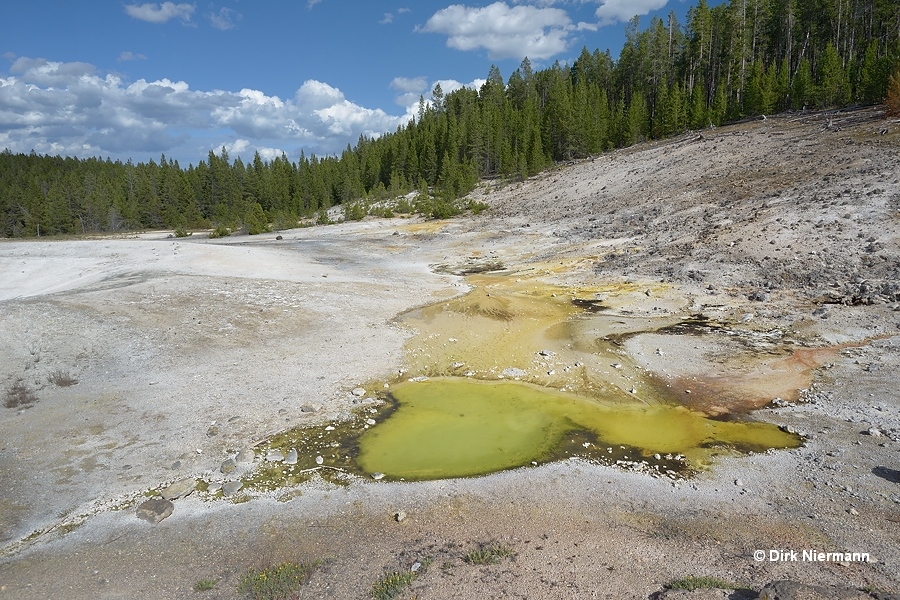
Even further out, beyond the Vermilion Springs, lies Locomotive Spring. From the boardwalk the water surface is impossible to spot, so the spring only attracts attention in the rare case of an eruption.

An exception regarding visibility is the artificial Carnegy Drill Hole from 1929. It can be detected as a steaming, sometimes also splashing pile of cemented rocks far beyond Congress Pool.